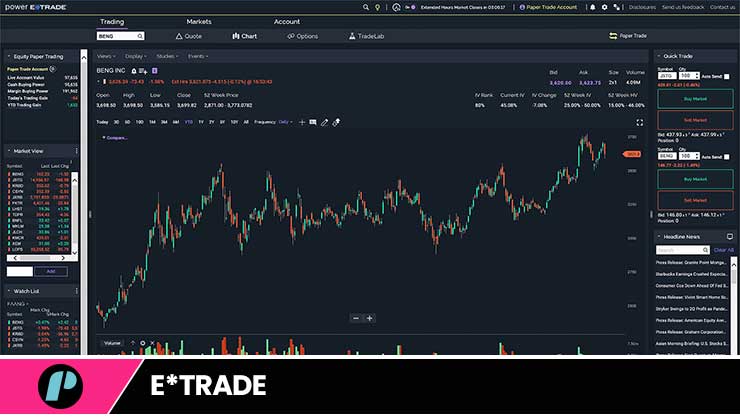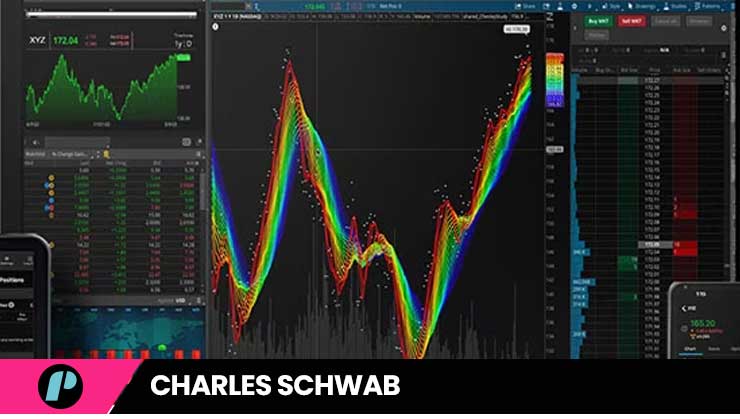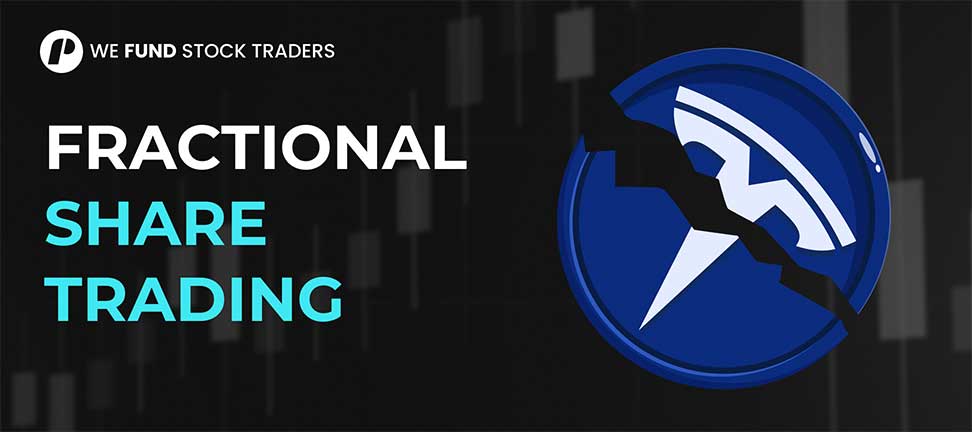Introduction
As promised in our previous article “The 5 Most Popular Order Types Explained”, this next one is all about the Trailing Stop Order.
We decided to leave this order type to last and dedicate to it a separate article so that we could properly explain what a trailing stop order is, how it works, and what we need to be mindful of when using one.
Without further ado, let’s dive in.
What is a Trailing Stop Order?
A trailing stop order (or trailing stop loss order) is a dynamic trading tool that helps protect profits and manage risk by automatically adjusting the stop-loss level as the market price moves in your favor.
Rather than being set at a fixed price like a traditional stop loss order, a trailing stop moves in tandem with the market price, allowing traders greater flexibility in terms of both risk and trade management.

Here is an example of how a trailing stop loss order is often used:
Let’s say you studied Nvidia’s (NVDA) hourly chart and decided to open a short position by market order. Let’s say price moves immediately in your favor taking your trade into the green. If NVDA’s price keeps dropping to a level you are happy with, you could first move your stop loss to break-even level – to avoid the risk of a currently profitable trade into a losing one – and then turn your stop loss into a trailing stop loss. This would allow you to “set aside” a portion of your profit that increases as price keeps moving in your favor and, at the same time, protect it against any sudden reversal.
Key Notes
- The main advantage of using trailing stop loss orders lies in their ability to lock in profits as prices rise while also offering downside protection against potential market reversals.
- Profit Protection
As the asset price increases, your stop order adjusts, ensuring that any subsequent downturn doesn’t erase your gains. - Automated Decision-Making
A trailing stop order automates the exit strategy, reducing the need for constant monitoring and ensuring traders stick to their predefined strategy. - Flexibility in Volatile Markets
By setting your trailing stop, you can adapt to rapid price changes and avoid being stopped out prematurely for the slightest market corrections.
How do you set a trailing stop order?
As we said, a trailing stop order can help you to manage your trades and your risk and, whether you choose to use it as part of your strategy or not, we think it is nonetheless important to at least learn and understand how to use it.
To set a trailing stop loss order you will first have to decide the trailing stop loss range, step, and start.
The trailing stop loss range
The trailing stop loss range is the distance between the trailing stop and the trade’s high (for long positions) or low (for short positions).
For example, if a trader buys a stock at $50 and sets a trailing stop loss range equal to $20, he/she will see the trailing stop moving to the $60 level when price reaches $80, to the $80 level when price reaches $100, and so on. If price drops from $100 to $90, the trailing stop will remain on the $80 mark. If price drops to $80, an automatic market order will be created and the position will be closed (sold at best available price).
You can set a trailing stop order in three different ways:
- by percentage,
- by dollar amount (or any other currency the asset is denominated in),
- by technical indicator.
Percentage-based trailing stop range
This method allows traders to specify a percentage by which the price must drop from its highest point (for long positions) or rise from its lowest point (for short positions) before the order is executed.
For example, if you set a trailing stop order at 5% on a stock that has risen to $100, the stop order is executed if price drops to $95.
Dollar amount trailing stop range
To set your trailing stop loss range in dollar terms, you would define a fixed dollar amount for the trailing stop as we described earlier.
For example, if a stock rises to $50 and you set a trailing stop at $2, your stop order will activate if the price falls back to $48.
Indicator-based trailing stop range:
Although this is easier done with EA, some traders prefer to use a technical indicator (or values derived by an indicator) to define their trailing stop.
The ATR, for example, is a very popular way of setting trailing stops, with 1x ATR and 1.5x ATR’s value being among traders’ favorite ranges.

In this example, you can see an open trade running on Coca-Cola’s Stock (KO). You can see the opening price, the original stop loss, the trailing stop start, the range, and the current position of the trailing stop itself.
The trailing stop step
When setting your trailing stop loss order step, you’re dictating how much price must move to provoke each stop loss adjustment.
For example, say the stock you are trading has reached a price of $50 and you have set a trailing stop loss order with a range of $10 (currently resting at $40) and a step of $3, the stop loss will not move to $41 when price moves to $51. Instead, it will move directly to $43 only if and when price reaches $53.
The trailing stop start
The trailing stop order start indicates the conditions that must be present for a simple stop loss to turn into a trailing stop loss.
For example, you might decide to set the trailing stop at the $100 profit level which means that only when your position reaches $100 profit, your trailing stop will start following the price.

A few points to keep in mind when using trailing stop orders
While trailing stop orders’ benefits are easy to see, you must remember they are not perfect and they too come with their drawbacks.
Always beware of:
Market Gaps
When market conditions are extremely volatile (for example just before and after market news), prices may move dramatically, which can lead to slippage. This means your order could be executed at a different price than expected, especially if the asset gaps down significantly.











